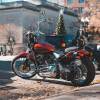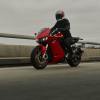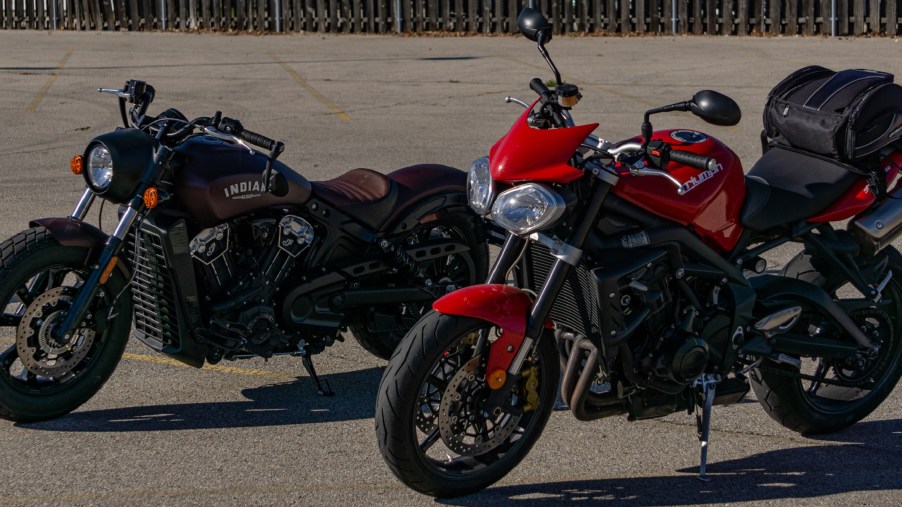
Riding Minimal: Indian Scout Bobber vs. Triumph Street Triple R
While cruisers and standard motorcycles are fairly different, they’re both commonly-chosen riding options. And they’re both available in ‘stripped-down’ forms: cruisers have bobbers, and standards have naked bikes. I own one of the latter: a 2012 Triumph Street Triple R. But after my recent time with a 2021 Indian Scout Bobber, I’ve grown to appreciate what cruisers offer. So, how do these minimalist models stack up, both on paper and on the road?
The 2021 Indian Scout Bobber and 2012 Triumph Street Triple R have different ‘stripped-down’ approaches
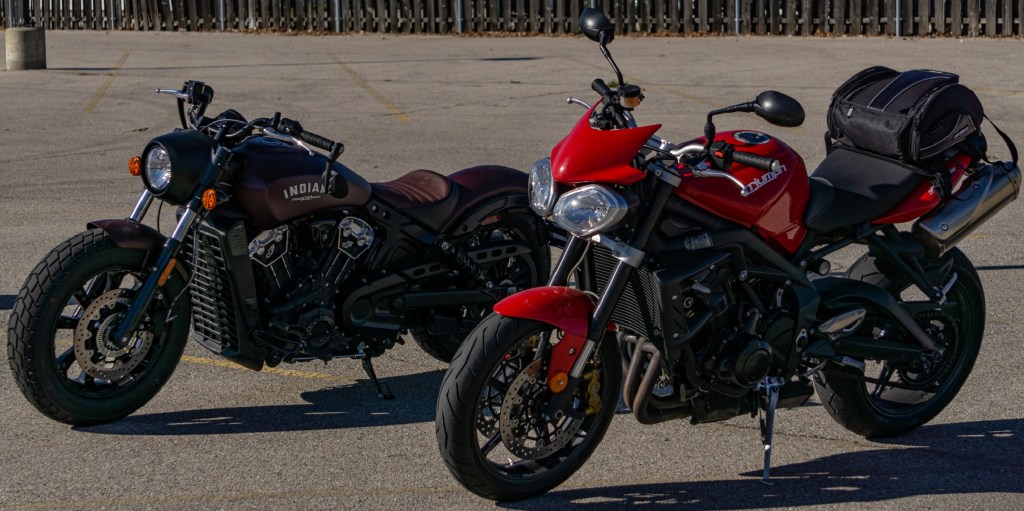
Despite their different appearances and designs, naked bikes and bobbers have somewhat similar ethe. They both stem from riders removing extraneous parts from their bikes to try to make them lighter, faster, and/or more visually striking. But while the 2021 Indian Scout Bobber and 2012 Triumph Street Triple R are faithful to their origins, they’re still different motorcycles.
The differences start with their engines. Both the 2012 Indian Scout Bobber and 2012 Triumph Street Triple R have liquid-cooled engines with 6-speed transmissions. However, the Scout Bobber has an 1133cc V-twin with 100 hp and 72 lb-ft. Meanwhile, the Street Triple R has a 675cc three-cylinder engine with 106 hp and 50 lb-ft, Motorcyclist reports. Plus, while the Triumph has chain-drive, the Indian uses belt-drive.
But, while the Triumph Street Triple R is down on torque, it’s also down on weight. It weighs 416 pounds, Motorcyclist reports, while the Indian Scout Bobber weighs 555 pounds. That’s less than the standard Scout, but only by 6 pounds.
Design and equipment
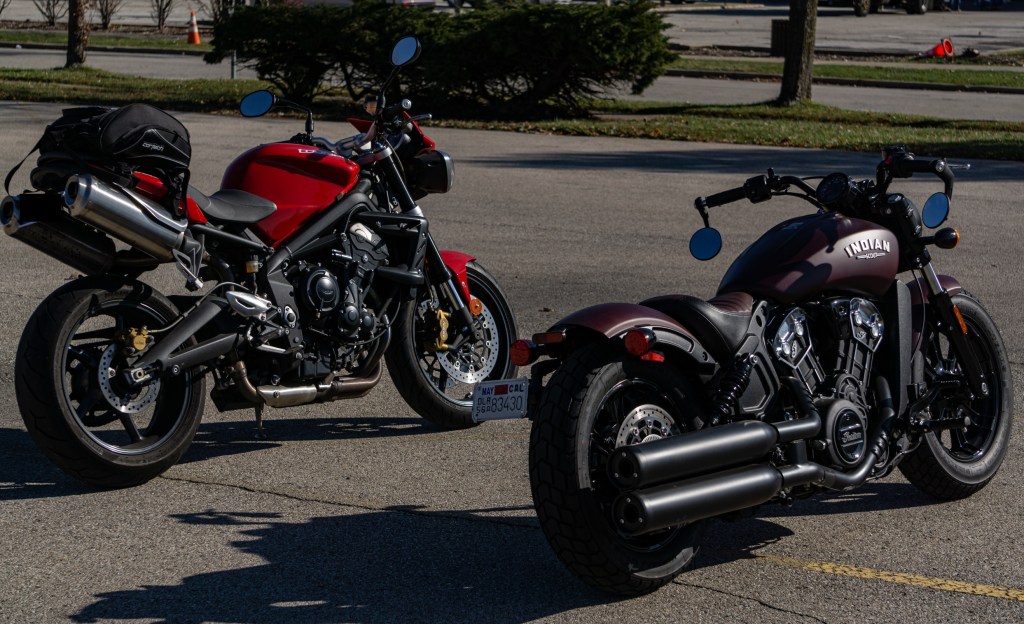
Besides the lower curb weight, the Indian Scout Bobber also has less chrome and more blacked-out trim than the base bike. Its footpegs and handlebars are also swept back closer to the rider, Cycle World reports, roughly where the reduced-reach controls would be, Motorcyclist reports. But even so, the Scout has a ‘feet-forward’ riding position, while the Triumph Street Triple R’s position is more neutral.
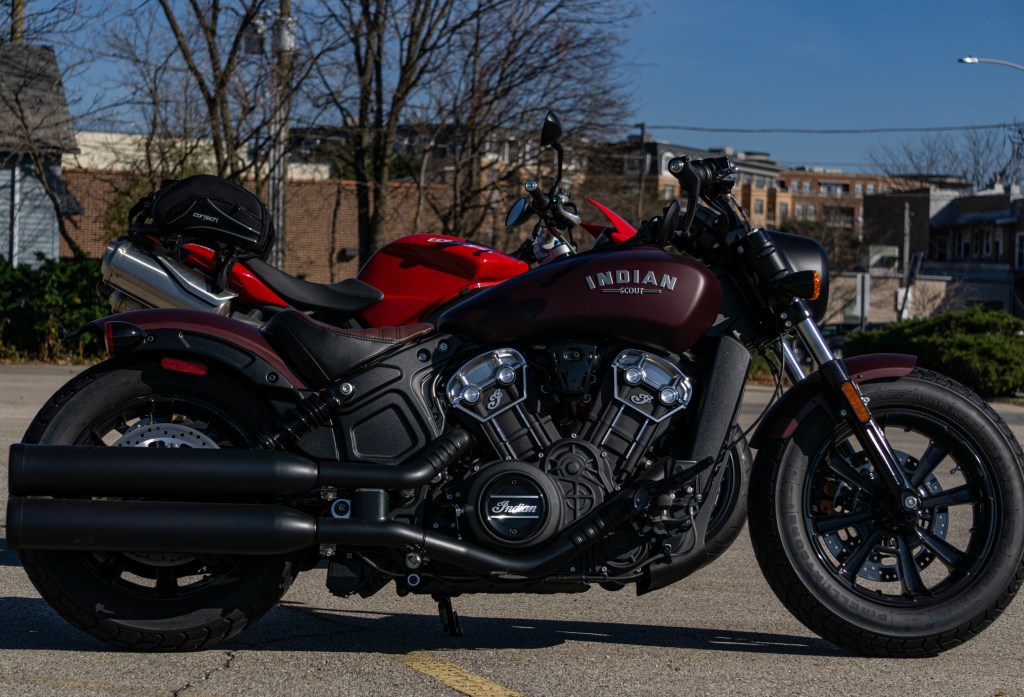
However, the Indian is noticeably lower than the Triumph, both overall and in seat height. The Street Triple R is 2.2” taller overall than the Scout Bobber, Bennetts reports. And its seat is 5.2” taller.
The Indian Scout Bobber has less rear suspension travel than the Street Triple R, though front travel is identical, TotalMotorcycle reports. It also has 1” less rear travel than the standard Scout to achieve that low bobber look, RideApart reports. The Triumph Street Triple R’s suspension is also more adjustable.
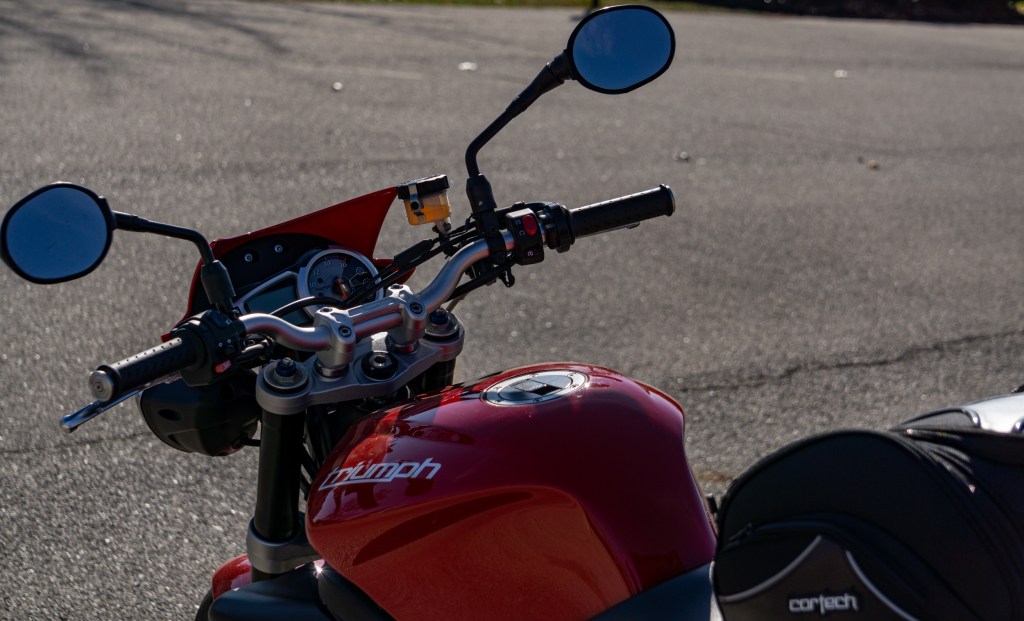
But beyond suspension, the two bikes are fairly similar equipment-wise. Both have disc brakes, multiple warning lights, and electronic displays. While my Street Triple R lacks ABS, it’s available, though not standard, on the Scout Bobber. The Indian has a voltmeter and a USB outlet, though, while the Triumph has shift lights and a temperature gauge. But both bikes have gear position indicators.
2021 Indian Scout Bobber vs. 2012 Triumph Street Triple R: riding styles
Although the 2021 Indian Scout Bobber is heavier than the 2012 Triumph Street Triple R, it doesn’t always feel that way. Particularly when you’re trying to maneuver the bikes in and out of your garage.
That’s because the Scout Bobber is lower and longer than the Street Triple R. As such, it has a lower center of gravity, which masks the weight somewhat and improves stability, Cycle World explains. The seat height difference further amplifies that. While I can put my feet down fairly easily while riding the Triumph, it’s almost comically easy on the Indian.
But when the road gets twisty, the Triumph Street Triple R starts to shine. That’s not to say the Indian Scout Bobber is only good or fun in a straight line. However, it takes deliberate effort to position the cruiser for each corner and turn. In contrast, the Street Triple R feels almost like a big bicycle in how it responds to inputs. And its rear shock is more compliant than the Indian’s dual shocks.
That sense of lightness continues into the controls, which have lighter pull-weights than on the Indian Scout Bobber. It also gives the brake and clutch controls slightly more feedback and modulation capability. The Scout Bobber’s slightly heavier, but not too heavy, controls are arguably more satisfying to work, though.
In terms of long-distance comfort, the Triumph Street Triple R’s seat is more supportive than the Indian Scout Bobber’s seat. And its riding position, combined with my bike’s flyscreen, provides more security against highway winds.
However, after an extended riding session, I noticed my throttle hand was getting numb on the Triumph, but not on the Indian. I’m not sure if that’s due to handgrip width—the Scout’s grips are wider—or hand position, though.
The cruiser’s and naked bike’s engines make for a different riding experience
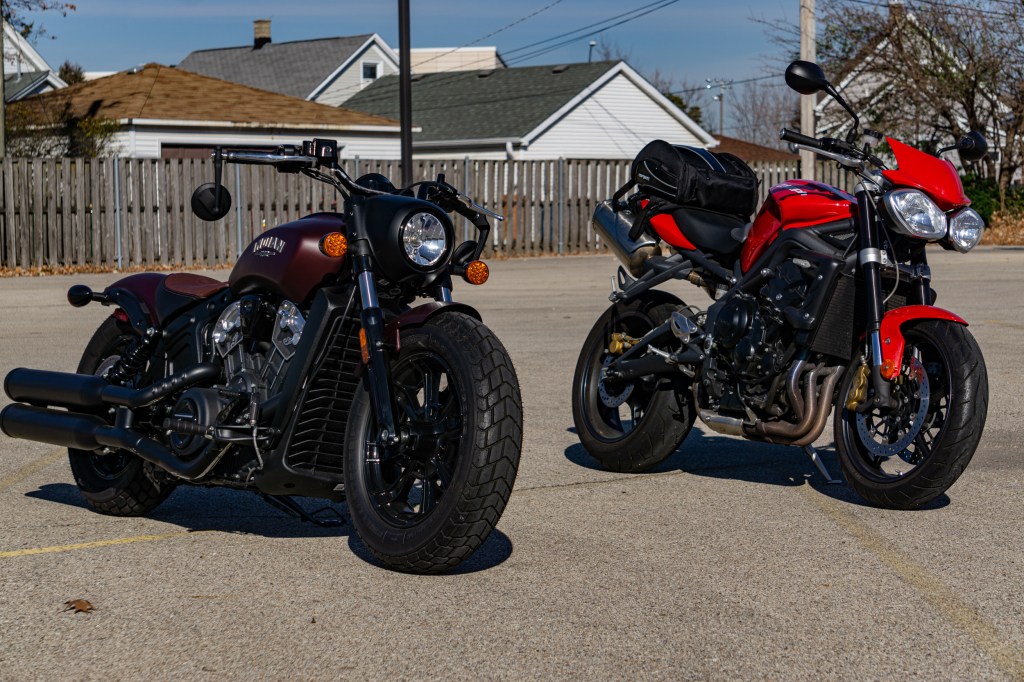
The two bikes’ powertrains are just as different in character as the bikes themselves. The Triumph Street Triple R’s shifter is slicker than the one on the Indian Scout Bobber. But the more mechanical-feeling nature of the Scout’s transmission makes each shift feel more significant.
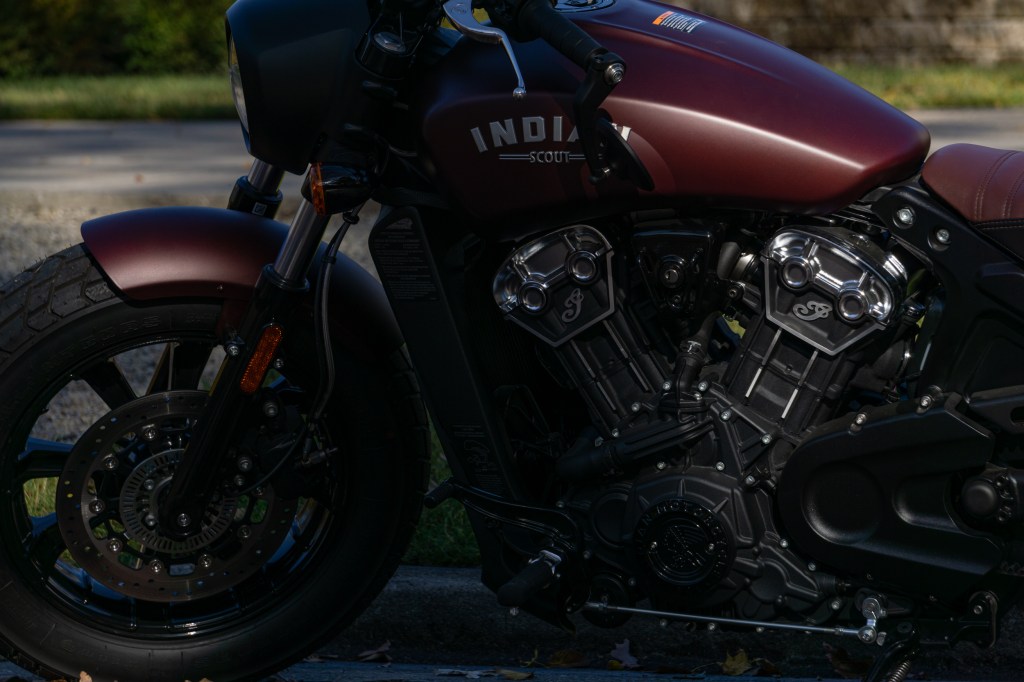
The Indian Scout Bobber’s V-twin is responsive and revs fairly high. Regardless of what gear you’re in, a twist of the throttle summons a smooth burst of speed. But it’s arguably at its best when you’re lower in the rev range, surfing the flat wave of torque, RevZilla reports.
The Triumph Street Triple R’s lower curb weight means it accelerates quickly, too. However, the three-cylinder engine makes peak power and torque at higher RPMs than the Scout does. And the naked bike’s different gearing means the Indian Bobber’s engine isn’t spinning as high at the same speed. As a result, I actually saw better mileage on the larger-engine Indian than on my Triumph. Also, the Street Triple R’s engine throws more heat than the Indian Scout Bobber’s V-twin.
Which should you choose, the bobbed cruiser or the naked standard?
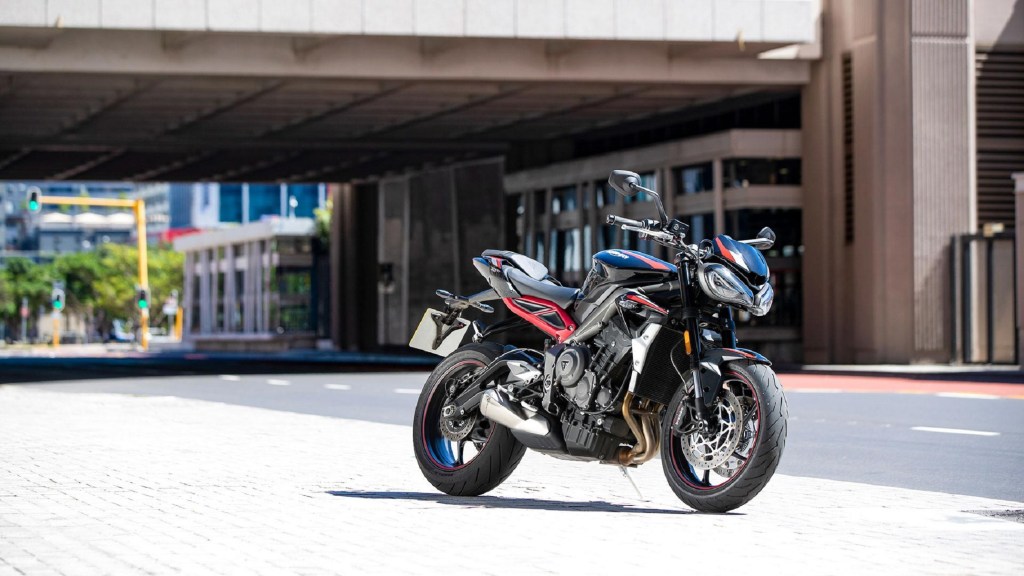
The modern version of my bike, the 2020 Triumph Street Triple R, costs roughly the same as the 2021 Indian Scout Bobber. The former starts at $10,800; the latter starts at $10,999.
However, the 2020 Street Triple R has standard ABS, multiple riding modes, and a 116-hp 765cc engine, Cycle World reports. If you want ABS on the Scout Bobber, the starting price rises to $11,899.
Choosing between these two motorcycles is largely a matter of personal preference, comfort, and riding locale. The Indian Scout Bobber is a bit like an American café racer: it sacrifices a bit of comfort for extra style and performance. The Triumph Street Triple R, on the other hand, is more balanced all-around, though it needs curving roads to explore its full bandwidth.
But no matter which you choose, you’ll still end up with an enjoyable machine.
Follow more updates from MotorBiscuit on our Facebook page.
